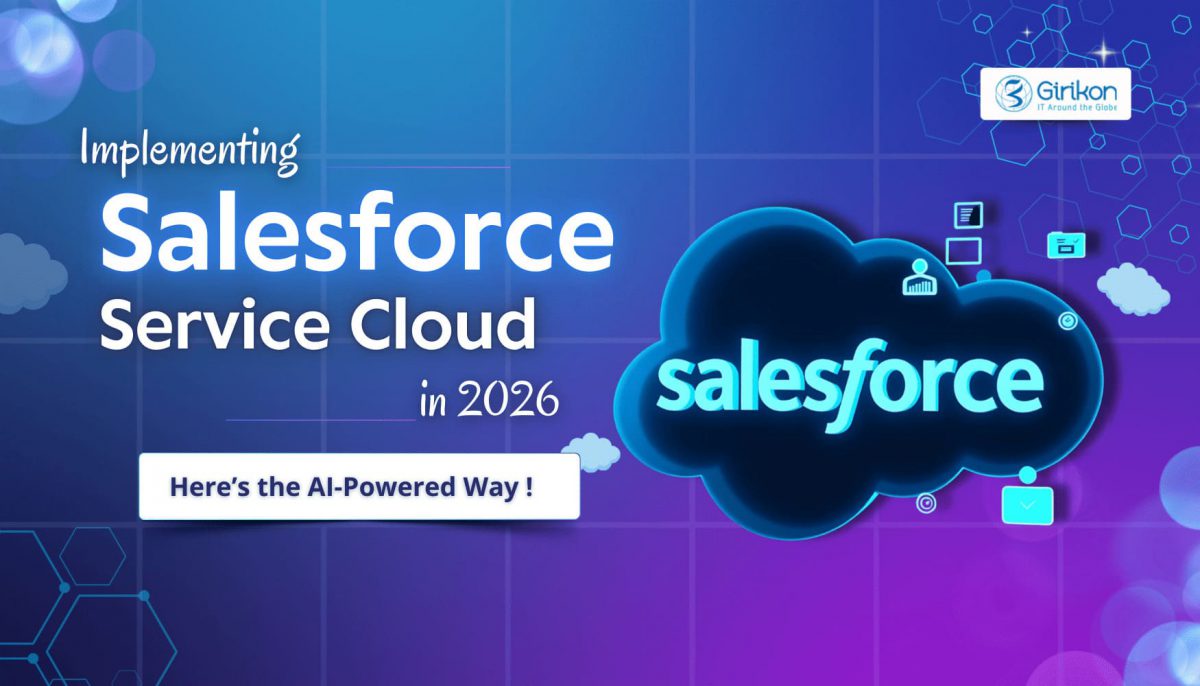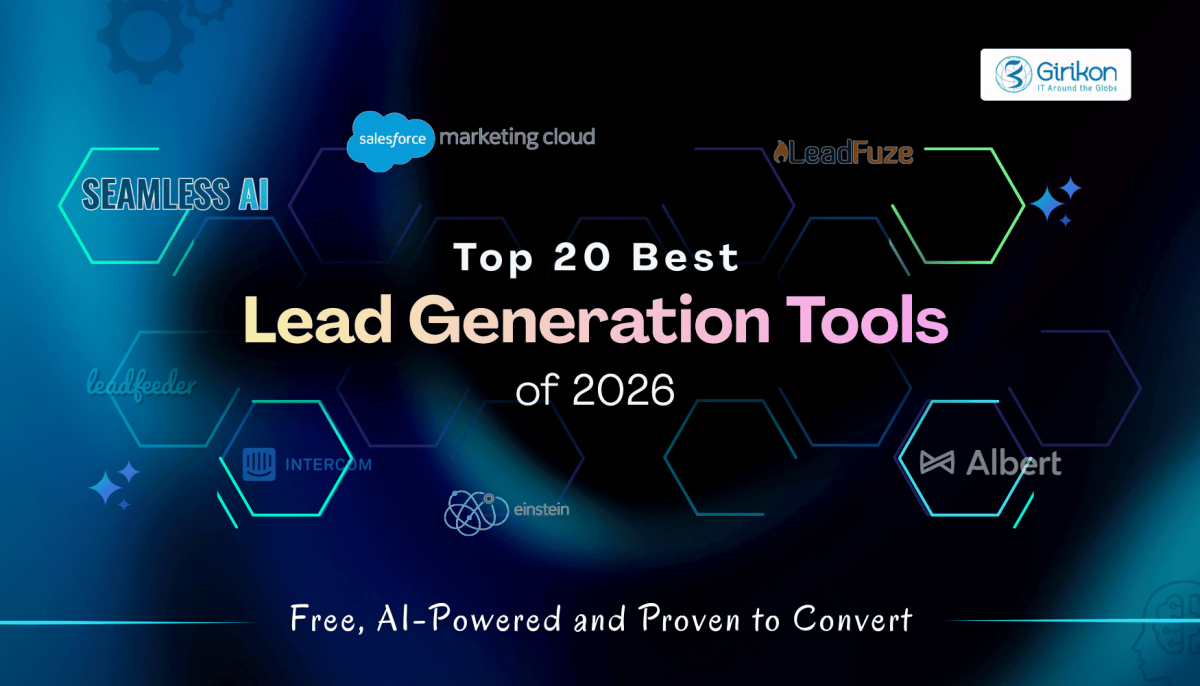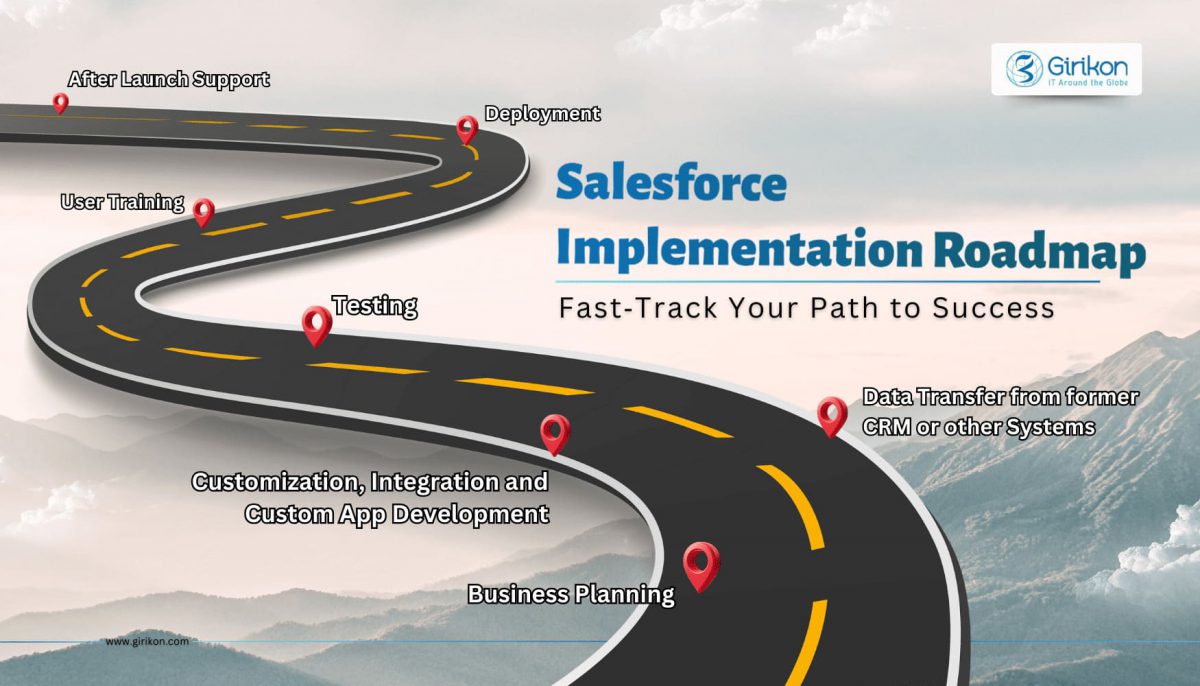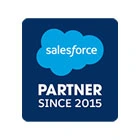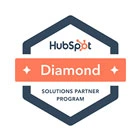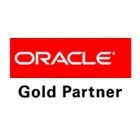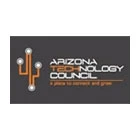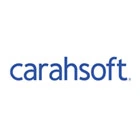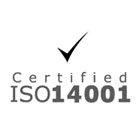The healthcare industry runs on compliance, precision, and patient trust. However, with increasing data complexity, demand for personalized care, and changing regulations like HIPAA, generic CRM setups don’t cut it anymore. That’s where Salesforce for healthcare comes in. Being a tailored CRM solution, designed to streamline workflows, unify patient data, and enhance engagement, it executes its operation across the care continuum.
However, to unlock its full potential, healthcare organizations require a certified Salesforce partner who not just understands Salesforce inside out but also knows the intricacies of healthcare operations. That’s where Girikon, the best Salesforce implementation partner, comes and stands out. By combining deep Salesforce expertise with healthcare domain knowledge, it delivers solutions that are compliant, secure, and patient-centric.
Why Healthcare Needs a Customized Salesforce Solution
Healthcare isn’t like other industries as it demands more than just marketing automation and lead tracking. Here is how:
1. Secure Data Management with Compliance
Since patient information is the most confidential information and strictly regulated by data privacy laws such as HIPAA, HITECH, and GDPR, healthcare institutions must incorporate custom Salesforce implementations for role-based access, advanced security, and encryption so that patient data remains protected at every point of contact.
2. Custom Patient Engagement
As every patient’s journey is different, a custom Salesforce workflow will be required to allow prescription follow-ups, appointment reminders, and discharge instructions, personalized to the patient’s treatment plan and preferences.
3. Connected Data Needed by Multiple Stakeholders
Healthcare practitioners, post-acute care entities, payers, patients, providers, and administrative teams have to coordinate with each other. A custom Salesforce configuration while connecting all the stakeholders on one platform ensures that data like claims, care plans, and patient history is always accessible and updated.
4. Interoperability with Core Healthcare Systems
Healthcare depends upon several applications, including EMRs, EHRs, lab systems, and telehealth portals, not to mention billing software. But the problem lies in the fact that separate management of all these systems presents an additional bureaucratic burden. That’s where a customized Salesforce integration powered by Salesforce consultants appears and bridges the systems with smooth data exchange.
What Makes Girikon the Best Salesforce Partner for Healthcare
Girikon is not just another Salesforce implementation company but a full-service Salesforce consulting and development Partner with relevant expertise and experience that is require to focus on compliance, innovation, and personalized patient engagement. Here is how the company transforms care delivery through customized Salesforce solutions.
1. Healthcare Expertise
Girikon is well versed in the ecosystem of healthcare and caters to clinics, hospitals, telemedicine providers, and health tech startups. For instance, using domain knowledge, the team develops such clinical workflows, appointment scheduling, insurance, patient lifecycle management, etc., that are in tune with healthcare operations to support clinical and administrative efficiency. Be that as it may, whether it is automating patient onboarding and connecting care teams across departments, Girikon makes sure that every process is mapped to match real-world healthcare needs.
2. Certified Salesforce Experts
Girikon has developers, architects, consultants, and administrators in its office certified on Salesforce Marketing Cloud, Health Cloud, Experience Cloud, and Service Cloud. While using their range of skills, you can easily create scalable and secure solutions tailored to your healthcare case. Thus, staying in the forefront of a rapidly evolving industry with Data Cloud, automation, and AI.
3. Proven Track Record
Girikon is known for delivering Salesforce Health Cloud implementation across clinics, hospitals, healthcare startups, and pharmaceutical companies. Moreover, its portfolios include AI-driven care coordination systems, patient engagement portals, and automated case management solutions. Using the Salesforce ecosystem, clients can easily report higher patient satisfaction, reduced administrative load, and better administrative load, thus, executing complex and compliance driven healthcare projects like pros.
4. End-to-End Salesforce Services
Here is a complete list of Salesforce lifecycle services that Girikon is known for among enterprises and startups.
Implementation: Setting up Salesforce Health Cloud and customizing the same to fit your organization’s workflow.
Optimization: Enhancing existing Salesforce implementations for data automation, flow, and user experience.
Integration: Initiating the integration of Salesforce with Patient portals, EHR/EMR systems, billing platforms, and Telehealth applications.
Managed Services: Don’t just limit with these but Girikon also provides ongoing support, updates, and maintenance to ensure long-term platform performance.
5. Compliance-First Approach
Data security and compliance are critical in healthcare, that’s what makes Girikon take this responsibility seriously. How?
It ensures GDPR, HIPAA, and HL7/FHIR compliant with each customization, integration, and data workflow.
With audit trails and automated access control in-built into each project, it lets you enjoy ongoing compliance and transparency.
Above all, your certified Salesforce implementation partner maintains encryption of patient data at all times, securing it, and restricting access to only authorized users.
Key Healthcare Salesforce Customization Offerings Brought to Your by Girikon
Moving into this section will let you learn about all the services and offerings that Salesforce consultants bring to the healthcare sector while driving collaboration, efficiency, and better patient outcomes.
1. Integration with EHR & Telehealth Systems
By following a path of seamless integration, Girikon connects Salesforce with telehealth platforms, EHRs, and scheduling tools to synchronize patient data, appointments, and prescriptions in real-time, thereby eliminating the creation of duplicate records while also lessening the tension on manual data entry and care coordination along with digital touchpoints.
2. HIPAA Compliant Communication
While security and compliance are the pillars of every customization, Girikon creates HIPAA-compliant Salesforce communication channels in email automation and encrypted patient portals; hence, providers can share sensitive health info with confidence, making each and every interaction confidential and compliant while still putting a human touch to it and in the patient’s perspective.
3. Patient Management & Care Coordination
Girikon customizes Salesforce Health Cloud for a truly integrated 360-degree view of each patient. In addition, it connects every data point from medical history to treatment plans and medical adherence so that care teams reduce silos, collaborate better, and go after intelligent decisions based on the evidence.
4. Appointment and Follow-Up Automation Workflows
Healthcare institutions that find challenges with appointment scheduling can put their trust to Girikon as they are known for implementing such AI-powered reminders and Salesforce automation tools that automate reminders, follow-ups, thus ensuring enhancing patient adherence to care plans, fewer no shows, and efficient use of healthcare staff time.
Conclusion
With Girikon’s commitment to compliance-first approach, proven healthcare expertise, and certified Salesforce team, it stands out as a trusted partner for healthcare organizations that aim to enhance patient experiences and modernize their systems.
From connecting EHRs to automating care workflows and ensuring HIPAA compliant communication, Girikon not just implements Salesforce but optimizes it for patient-centric care. If you are ready to build an intelligent, compliant, and connected healthcare ecosystem, meeting with the high-graded consultants at Girikon is what you need today.
Salesforce Spring’ 25 is right here—surprising Salesforce consulting firms with new features and enhancements. Businesses, too, can get their hands on new releases, thus optimizing workflows and managing configurations. If you are also interested in the most anticipated and exciting parts of the release, get it all in easily digestible and discipline-based chunks. Also, explore how the new feature helps businesses minimize disruption across verticals.
Top Updates of Salesforce Spring’ 25 for Salesforce Consultants
Here is what Salesforce consultants should be aware of while optimizing Salesforce for their clients. The enabling of these features takes the game of Salesforce to a new height.
Salesforce Platform Login License for Improved Usage Monitoring
Leveraging enhanced tracking capabilities on the System Overview Page, you can easily monitor Salesforce Platform Login License compliance. Thus, enabling administrators to find users who go beyond their custom object allocation limits.
What’s New:
Get a detailed overview of usage data via CSV download.
Find usernames and associated custom object creation details.
Monitor platform login users who exceed custom object limits.
How to Run?
Navigate towards the System Overview.
Try to find “Salesforce Platform Login Users Over Custom Object Limit.”
Tap the adjacent number to download the usage report.
With this tool, you can easily maintain license compliance, at the same time, ensure transparent visibility into custom object usage across all departments.
Welcome Email Customization for Enhanced Branding Control
Easy creation of personalized internal user welcome emails with custom onboarding information and brand-specific elements to ensure tailored first-contact communications.
Benefits of Enabling It
Verification compliance
Consistent branding
Streamlined onboarding
Enhanced user experience
Customization Options
Custom messaging
Verification Integration
Brand-aligned design
Onboarding instructions
Implementation Steps
Craft classic email template.
Insert (NewUserWelcomeEmailLink) field.
Run Session Settings.
Set and configure Welcome Email Template.
This ensures proper user verification process, and at the same time, nurture brand identity. However, for that, you must include a verification link for email verification compliance as it is compulsory.
Note: Get in touch with the Salesforce implementation companies to implement this feature.
Setting up of Enhancement for Personalized Recommendations
Upon configuring this feature, you will get customized recommendations under “Suggested for You,” tab based on your workflow preferences and organization’s product usage patterns.
What’s All New Here?
You will get setup suggestions based on:
User workflow patterns
Company-wide usage trends
Installed products
What are all the Interactive Features Inside?
Copy function to use it in future for references.
Dismiss option for individual suggestion.
Action buttons for quick and instant implementation
Preference Management
Move to Setup > Adoption Assistance to access and customize suggestion. Thus, ensure relevant and actionable recommendations based on business specific needs and streamline Setup experience. Consider getting in touch with one of the best Salesforce consulting companies if you want to set up this feature without any loopholes.
Email Sender Verification for Mandatory Security Update
With the start of Spring’ 35, each user can visit My Email Settings. From there, they can verify their return email addresses to ensure email sending functionalities. On top of that, they support improved email security standards for more reliable and consistent message delivery.
As the feature is not upgraded yet, here is how you can do it:
Tap Trust Status > Search Instance > Maintenance Tab
Here is what Salesforce offers under this feature:
You can enable manual verification only through My Email Settings.
Unauthorized email addresses can be blocked easily from sending emails.
How to verify emails?
Navigate My Email Settings.
Choose Resend Verification Email (If it is there).
From the email received, tap the verification link.
Note: The address may be already verified if you don’t get the resend option.
Action Required:
It would be best if you allow all your users to complete email verification before Spring’ 25 to ensure prevention against blocked emails.
Domain Configuration Update for Maps and Location Services
This functionality is essential for streamlined Google Maps integration. So, any business that wants to integrate Google Map with Salesforce can go to Network allowlists. And add *.forceusercontent.com there, it is a domain essential for all organizations that use maps and location services.
Here is what the domain supports:
Visualforce map development
Display of map on standard address fields.
Autocomplete functionality
Who needs configuration for this domain:
Proxies
Network allowlists
Firewalls
For uninterrupted access to mapping features, you can ensure proper domain configuration with the help of Salesforce consulting firms.
Search Manager Update to Customize Profile-Specific Filter
What if you get granular control over explicit search filters? Well, this is what is ensured by this filter. Leveraging this, you can enable precise customization based on user profiles and object types. Thus, ensuring to deliver personalized services.
Here is what’s new inside it?
Profile-specific filter configuration
Object-specific filter customization
With such options for customization, administrators can easily fine-tune search experiences for different customers. This in turn, helps them enhance search efficiency and relevance, which is directly proportionate to improved user satisfaction. Ensure to get Salesforce consulting services to get more info on this.
Custom Report Types for Improved Management Experience
Custom report types deliver a direct response to IdeaExchange feedback in terms of flexible customization, enhanced navigation, and expanded field capacity.
Here is all you get updated within the feature:
Easy to understand summary page layout
Creation of personalized list
Improved report type discovery
Increased field capacity of up to 1,000 fields via lookup
Streamlined object relationship management
Newest Features of Layout Editor
Comprehensive field information
Advanced field search functionality
Drag and drop option for intuitive field management
Easy to customize display names
Integrated lookup field access
Setup Process
Move to Setup.
Then, click Reports and Dashboards Settings.
You need to toggle on Enhanced Custom Report Type Setup Page.
Just navigate Quick Find.
Access Report Types from there.
Batch Collection Management for Hassle-Free Asset Organization
Within this feature, you can eliminate individual item addition, thus managing your collections more appropriately. Additionally, you can ensure multi-collection updates with different features that include:
Multiple collection targeting
Bulk asset selection
Single-action batch processing
How Can You Enable Collection?
Move to Analytics tab or Analytics Studio
Pick Browse or Favorites
Select Multiple Items
Tap Bulk Actions > Add to Collections
Choose target collections.
With this update, you can easily reduce collection management time, thus streamlining asset organization workflows.
Quick Actions to Redirect to a Newly Created Record
Expanded toast message functionality enables you to record access after you create it. Users can easily navigate towards it by selecting either custom toast notifications or default. Here is what new you can find inside the feature:
Unified functionality across custom and default notifications.
Availability of both mobile and desktop platforms.
All toast messages as navigation links to newly created records.
All these new features help simplify post-creation workflows, at the same time, providing greater flexibility in how users access their records.
Salesforce Spring’ 25 Updated Functionalities for Agentforce
Sales Coach: AI-Driven Salesforce Performance Enhancement
With the new Agentforce Sales coach, you can easily analyze sales conversations. Thus, ensuring targeted feedback using the CRM data insights. Moreover, the tool empowers sales teams with data-driven and scalable coaching, enhancing deal progression and conversation handling.
Key Features Included within this
Interactive role-play sessions
CRM integrated coaching recommendations
Personalized performance feedback
AI-Powered pitch analysis
Stage Specific Functionality
Qualification/Needs Analysis:
Detailed Feedback
Transcript Analysis
Sales Pitch Practice
Proposal/Negotiation Stages:
Performance Evaluation
AI-driven customer role-play
Improvement recommendations
New Agent Topics
Sales Coach Agent for Proposal/Pricing Quote Role-Play
Sales Coach Agent for Opportunity Coaching
New Template for Sales Pitch Feedback
Sales Coach Agent for Negotiation/Review Role-Play
Agentforce Service for Real-Time Conversation Monitoring Update
Enable supervisor oversight of AI-customer interactions with new live monitoring capabilities in Omni Supervisor. Thus, ensure improved service quality through intervention options and real-time supervision.
Key Features
Flag raising system
Real-time supervision
Live session monitoring
Transfer capabilities
Implementation Steps
Configure AI agents by enabling raise flag action and adding supervision settings.
Set up Omni Supervisor by tapping on AI agents tab and configuring monitoring access.
Supervisor Tools
Flag management
Agent reassignment
Quality Monitoring
Live conversation viewing
Monitoring Process
Open the AI Agents tab.
Tap Monitor for active conversations.
Review or evaluate Interactions
Transfer to reps when it requires.
With such new amendments, businesses can ensure quality control and seamless escalation path for AI-customer interactions.
Agentforce Service for Context-Aware Search Integration
This feature consists of real-time search context integration using which you can optimize user support. Thus, ensuring intelligent solution suggestions based on user behaviors.
Key Functionalities
Knowledge base integration
Contextual responses
Real-time query processing
Automatic suggestions
Key Benefits
Improved support experience
Real-time context awareness
Automated answer generation
Faster query resolution
Implementation Steps
Go to Experience Workspaces
Access AI experience
Toggle on Share search queries
Activate context sharing
Upon conducting this implementation, you can ensure intelligent and context-driven interactions, thus ensuring more efficient support.
Agentforce SDR for AI-Powered Sales Development Automation
Agentforce SDR is an AI agent that automates top-of-funnel activities. Using it, you can transform your lead qualification process, thus enabling the sales team to focus on improved interaction.
Core Functionalities
Customized email communication
Product-related responses
Meeting coordination
Automated lead engagement
24/7 operation
Intelligent follow-up management
Required Components
Einstein Activity Capture: Calendar/email synchronization
Automated Actions: Cadence management
Sales Engagement: Product outreach management
Data Cloud: Compliance and Analytics
Einstein Generative AI: Content generation
Salesforce Inbox: Email Integration
Einstein Copilot: AI action orchestration
Key Features
Automated follow-up sequence
Activity tracking in lead timeline
Integration of calendar for meeting scheduling
Customized initial outreach
Knowledge based response generation
Procedure to Implement
Navigate Agentforce SDR
Enable it and complete the setup.
Conduct feature configuration.
Now, you need to create agent user record.
Optimize Agent Builders parameters too.
Also, define lead assignment rules.
With this feature, you can streamline lead qualification processes and maintain personalized engagement through AI-driven automation.
To Conclude!
With these new updates, new opportunities will drive your business growth. So, start exploring these features today with the help of the best Salesforce consultant and drive meaningful outcomes like never before.
For detailed implementation guide, contact the experts out there and optimize new features for business growth.
Innovation in the field of artificial intelligence is progressing at a dizzying rate. The industry is quickly moving from automating support conversations to role-based automation that complements the workforce thanks to the advancements in technology. Understanding what makes humans most successful at their jobs – discerning ability, is essential for AI to replicate human abilities. Humans are able to process information, consider potential future directions, and act. Giving AI this kind of discerning ability necessitates a very high degree of intellect and judgment.
While designing Agentforce, Salesforce leveraged the most recent developments in reasoning models and large language models (LLMs). Agentforce is a collection of pre-built AI agents, which are proactive, self-contained programs created to carry out specific tasks, as well as a set of tools for creating and modifying them. These self-governing AI agents are highly sophisticated in their ability to reason, plan, and choreograph tasks. Agentforce marks a pivotal moment in the application of AI automation for customer support, sales, marketing, commerce, and other areas.
This article talks about the advancements that led to the creation of the Atlas Reasoning Engine, the brain behind Agentforce, which intelligently and independently coordinates actions to provide businesses with an enterprise-grade agent-powered solution.
The Transition from Einstein Copilot to Agentforce
Einstein Copilot, which was launched recently by Salesforce, has since evolved into an Agentforce CRM agent. Einstein Copilot follows a structured reasoning technique called Chain-of-Thought reasoning (CoT). In this method, the AI system creates a plan with a series of actions to achieve a goal, simulating human-like decision-making.
Einstein Copilot has the ability to co-participate in workflows, just like a human would, using CoT reasoning. While this made Einstein Copilot far more sophisticated than conventional bots, it was unable to accurately simulate human intellect. In response to tasks, it produced a plan that included a series of actions, which it subsequently carried out one after the other. However, it lacked a mechanism to request that the user reroute it in the event that the plan was flawed. As a result, users were unable to contribute fresh and helpful information as a conversation went on, creating an AI experience that was not flexible.
Einstein Copilot's natural-language conversational experience was far superior to that of conventional bots, but it had yet to reach the elusive goal of being genuinely human-like.
With the activities it was set up with, Copilot performed a great job of achieving user objectives; but, it was unable to respond to follow-up questions regarding information that had already been discussed. In order to answer more user inquiries, it needed to make greater use of context.
Copilot's performance began to deteriorate as Salesforce added more actions to automate additional use cases, both in terms of response quality and latency. For it to be useful, it had to scale to handle thousands of use cases effectively.
This led to the creation of Agentforce.
Agentforce: A quantum leap in reasoning
The first enterprise-grade AI-powered conversational tool, Agentforce can make intelligent decisions in real time at scale with limited to zero human involvement. That is made feasible by a number of innovations.
Orchestration based on Reasoning and Acting (ReAct) – In comparison to the CoT technique, extensive testing revealed that ReAct-based prompting produced far better results. The system performs a cycle of reasoning, acting, and observing in the ReAct mechanism until a specific goal is achieved. This type of cyclic technique enables the system to take into account any new information and request clarifications or affirmations in order to achieve the user's objective as accurately as feasible. Additionally, this results in a conversational experience that is far more fluid and natural.
Topic classification. Salesforce came up with a novel idea called themes, which corresponds to a task or user intent. User input is mapped to a topic, which includes the set of guidelines, company regulations, and steps to complete the request. The system may easily scale thanks to this technique, which aids in defining the task's scope and the LLM's associated solution space. Topics that incorporate natural language instructions give the LLM further direction and boundaries. Therefore, a natural-language topic instruction could be used if one needs particular tasks to be performed in a specific order.
If a business has a "15-day free return policy" for example, they can be given instructions and sent to the LLM so that it can consider them and adjust the user interface appropriately. Agents can safely and securely scale to thousands of activities because of this technique.
Leverage LLMs for replies. In the past, Salesforce limited the system's response options to action outputs alone, which significantly limited its capacity to react in light of the conversation's contents. A considerably richer conversational experience has been made possible by opening up the system to allow the LLM to reply utilizing the context in the discussion history. A higher goal-fulfillment rate results from users' ability to now ask follow-up questions and request clarifications regarding previous outputs.
Reasoning. Hallucinations are greatly reduced when LLMs are encouraged to express their opinions or give justifications for their choices. This has the extra benefit of giving administrators and developers insight into how the LLM behaves, allowing them to modify the agent to suit their requirements. By default, reasoning is accessible in the Agent Builder. Additionally, users can ask follow-up questions to elicit an explanation from the agent. This promotes trust in addition to preventing hallucinations.
Additional Agentforce characteristics
In addition to the Atlas Reasoning Engine, Agentforce stands out for a number of other significant reasons.
Proactive action. Agents can be triggered by user interaction. However, data operations on CRM or typical workflows, such as a ticket status update, an email a business receives, or a meeting that begins in 10 minutes, can also activate Agentforce agents. By providing agents with a degree of proactiveness, these methods increase their usefulness in both the front and back offices and enable them to be deployed in a variety of dynamic business situations.
Retrieval of dynamic information. The majority of business use cases entail getting information or acting. Grounding is one of the most common ways to provide agents with static information. However, a huge range of use cases and applications are made possible by agents' capacity to access dynamic information.
Agentforce provides a number of ways to access dynamic data. Agents can obtain any pertinent information from external databases and data sources by applying contextual search to both organized and unstructured data in the Data Cloud via RAG (Retrieval Augmented Generation).
Second, Salesforce has enhanced the agent's capacity to manage complex tasks by introducing general information retrieval methods such as online search and knowledge Q&A. Imagine using a web search to learn more about a business or a product, then combining that information with internal company knowledge before sending a summary email to a contact. The agent can manage business tasks more effectively and efficiently when data from several sources is combined.
Finally, agents can be implemented in Apex classes, Flows, and APIs. This eliminates the need to create bespoke solutions and manage each case independently by providing the agent with all of the contextual information in a process as well as information for different scenarios. Agents can better grasp their operating environment thanks to all of these processes that enable them to access dynamic information, which multiplies their level of engagement.
Transfer to a human agent. AI is capable of hallucinations and can be nondeterministic at times. For this reason, Salesforce came up with the Einstein Trust Layer, which offers prompt injection defense, zero data-retention agreements, toxicity detection, and a number of other features. It contains built-in safeguards to keep LLMs from straying and experiencing hallucinations. However, LLMs are still not entirely accurate in spite of all these methods. Agentforce naturally provides a seamless handover to a human, which is essential for those important business cases where there is no tolerance for error. In every desired business scenario, a discussion can be safely and smoothly transferred to a human thanks to Agentforce's treatment of transferring a case to a human rep as just another action.
What's the future for Agentforce?
Agentforce is revolutionary for Salesforce customers, even if it is still in its early stages. Salesforce research continues to make big strides in innovation to make its agents even more resilient and intelligent. Customers can expect the following developments in the days to come:
A framework for testing and assessing agents. It takes an enormous amount of testing and refinement to introduce a sophisticated technology like Agentforce to businesses. In order to test the outcomes, accuracy, classification, and plans, Salesforce has created a strong evaluation framework. With the help of this architecture, Salesforce research teams have been optimizing the agents for reliability, accuracy, latency, and costs. Their assessment approach is tailored especially for CRM business use cases, in contrast to other publicly accessible frameworks and benchmarks that mostly concentrate on assessing an LLM's performance on linear tasks and general knowledge competency. Additionally, Salesforce has released the first LLM benchmark in history and is now working to make its agent evaluation framework accessible to Salesforce implementation partners and customers.
Multi-intent support. Simulating human-like conversations is the hallmark of Agentforce. Many everyday phrases, like "Where is my order", "Exchange my shoes order for size 9", "update case status", "email installation steps to the customer", "book a flight", and "Reserve a table", contain several unconnected objectives. Together with large-context support, LLMs' natural language comprehension skills, and creative ideas like themes, Salesforce is always experimenting to provide customers with a dependable, scalable, and secure solution.
Multimodal support. Voice and vision-based interactions, which are the most natural forms of human contact, enhance the overall richness of experiences several times over, even if text-based interactions make up the majority of digital interactions. The multimodal AI market is really expected to rise by over a third by 2030 thanks to developments like large-context windows, faster response times, concurrent processing of multimodal inputs, and sophisticated reasoning skills. Multimodal support can benefit the following business use cases:
Voice use cases. Providing AI-powered voice support, employee onboarding, and training.
Vision use cases. Product comparison and search, web and mobile interface browsing, and field service troubleshooting.
Multi-agent support. One of the most revolutionary innovations of our time is agent-to-agent interactions. Multi-agent systems can significantly reduce processing times for complex workflows that now go sequentially owing to human-to-human hand-off because of their capacity to concurrently retrieve and process information. In addition to helping humans involved in these processes be more productive, AI agents can be introduced into these workflows to handle repetitive tasks.
This type of multi-agentic paradigm is already being introduced in the sales process, where an agent can serve as a sales coach to counsel a sales representative on how to best negotiate a contract or as a sales development representative to nurture the pipeline. Other parts of the sales process, such as lead qualification, drafting a proposal, and post-sale follow-up, can also be handled by specialized AI agents. Similarly, a service workflow may include agents who assist human representatives and answer questions, as well as agents who follow up and assign cases.
Powering the next wave of AI
Hot on the heels of copilots and predictive AI, Agentforce is the next wave of AI. Customers can use Agentforce to create agents that anticipate, plan, and reason without much assistance, in addition to responding to conversational cues to act. Without human assistance, agents are able to make decisions, automate workflows, and adapt to new information. AI agents can also provide a smooth transition to human reps, promoting collaboration across departments. With just a few clicks, these Agentforce agents can be used to enhance and revolutionize any team or business function.
Want to learn more about Agentforce? Talk to a Salesforce AI services expert today.
AI is undergoing a significant transition, with the accuracy and dexterity of specially designed autonomous agents replacing the broad scope of massive, general-purpose AI. It's more than just evolution of technology. It's about conceiving how machines can complement the workforce.
Purpose-built agents are specially designed digital agents that are focused on a single task and perform it almost perfectly, whether that task is assisting salespeople in nurturing leads, coming up with campaign concepts for marketing teams, or answering customer support queries. They have capabilities few GPT-based systems can match – the capacity to act and complete tasks.
Autonomous agents will transform the workplace.
You've likely been both amazed by AI's potential and frustrated by some of the practical constraints of GPT-based systems at work if you've utilized generative AI to help generate an email copy or conceive a campaign idea.
Because they were trained on publicly available data and information, they are unable to produce outputs that accurately represent your everyday reality because they are unfamiliar with your company and its customers. For instance, they are unable to help you with analytics on the performance of past campaigns or insightful information on open leads.
Innovative new data platforms that gather, integrate, and connect all of the data points are already helping future-thinking businesses start to fill that knowledge gap. However, a second prerequisite must be fulfilled for AI to be genuinely useful in an organizational context. AI agents should be able to perform actions on behalf of humans.
Autonomous agents accomplish this by fusing large action models (LAMs) with the natural language processing capabilities of LLMs. Language models that can carry out operations in other programs and systems are known as LAMs. Because LAMs are trained on data that is handpicked for task execution, autonomous agents can initiate a variety of actions on their own.
Large Language Models (LLMs) and Large Action Models (LAMs): The Pillars of Autonomous AI
In what ways do LLMs and LAMs collaborate? Consider a scenario where you want an AI agent to send a tailored SMS or WhatsApp message with a discount code for subsequent purchases to the first 50 customers who buy a new product.
An LLM would struggle to accomplish this on its own. Indeed, it could produce the material, but action is needed to segment 50 customers and deliver each one a tailored message by leveraging organizational CRM data. This is where the LAM comes in. The LAM would leverage its function-calling abilities to make requests to perform certain tasks, such as an API call to a third-party system or querying the CRM to retrieve customer and product data.
In the field of healthcare, an agent could assist patients in finding the best physician by identifying their symptoms, preferences, and location. It streamlines what is frequently a tedious and long-drawn process by identifying a time that works for the patient and physician and scheduling the appointment.
In retail, an agent can answer common questions like "Where's my shipment?". AI agents can also launch targeted marketing campaigns and offer customer service replies at the precise moment when the customer is most responsive.
In financial services, agents can examine the client's spending patterns, analyze past investments, and financial objectives, and analyze market movements to recommend modifications in their existing portfolio enabling money managers to focus on what they do best – deliver exceptional service to their clients instead of spending time making sense out of their data.
AI agents can significantly augment the abilities of an organization's workforce. Imagine a world with zero customer service wait times, apps that adapt to user activity, and AI sales coaches who are always assisting sales reps in closing deals.
Autonomous agents collaborate with existing teams.
A future in which workers collaborate with agents to provide better results for both customers and businesses is already here. These solutions increase productivity and free up the workforce to enable them to focus on strategy and creativity.
People can spend time solving complex problems and refining their strategies when AI handles the specifics, expanding the realm of what is feasible and igniting innovations across industries. This collaboration between AI and human creativity ushers in a new era of efficiency, productivity, and innovation.
LAMs – Leading the Next Wave of Autonomous AI
With the advent of AI agents that can act as skilfully as they can converse, generative AI has formally begun its second act. Through the use of external tools and access to knowledge beyond their training data, these autonomous AI agents are able to perform tasks that either augment their existing tasks or act on their behalf.
We believe that AI assistants and AI agents will be the two main forms of autonomous AI. Both have two key characteristics in common.
Agency is the capacity to take meaningful action, sometimes completely independently, to achieve a predetermined objective. The ability to learn and change over time, although in different ways, is the second. Artificial intelligence assistants will adjust in creative ways to better understand a specific user for whom they are meant to provide support.
AI agents will learn shared processes, best practices, and much more to better complement a particular team. In other words, AI agents are designed to be shared at scale, whereas AI assistants are designed to provide a personal touch. Both hold the promise of opening up new opportunities for businesses.
Creating a tangible impact
With applications ranging from customer care to IT support to sales enablement, agents and assistants collectively represent a revolutionary way of working. Consider, for instance, a jam-packed schedule of sales meetings, including video calls to in-person trips around the world. Sales professionals in almost every business live in a hectic reality. And that reality is made even more complex by the need to carefully go through vast amounts of CRM data that is created across every interaction.
Now imagine an AI assistant, that accompanies you to every call and meeting, keeps track of all relevant information automatically organizes it perfectly, and responds to questions about it anytime anywhere. Wouldn't scheduling be a lot simpler? Knowing that their only goal and task was to focus on building stronger customer relationships, how much more productive would a sales professional be?
It's fascinating to imagine how all of this would operate. With a focus on privacy, of course, your AI assistant would be there at every meeting, following the discussion from one point to the next and gaining a greater grasp of your needs, behavior, and how you work. Your AI assistant will either assign higher-level subtasks to an AI agent or invoke an action for a specific subtask, such as querying a knowledge article, as it recognizes the need to complete specific tasks, such as retrieving organizational information or summarizing meeting notes.
The challenges ahead
There will be technological, sociological, and even ethical obstacles as we step into the future of autonomous AI. The issue of memory and perseverance is the most important of these. AI assistants can get to know us well, including our daily routines, peculiarities, and long-term goals, if we so want. Like our relationships with friends and coworkers, every new engagement should be built upon a foundation of prior experiences.
However, it's not easy to accomplish this using the AI models available today. Initiatives to create autonomous AI systems with rich, reliable memory and attention to detail are hampered by variables like computation and storage costs, latency issues, and even algorithmic constraints. Humans are exceptionally skilled at distilling minutes or even hours of material into a few main points, whether in a meeting, lecture or even a discussion with someone. Similar skills will be required of AI assistants.
Trusting the results of an AI is even more crucial than how well it remembers things. Despite its incredible potential, generative AI is still frequently constrained by issues like hallucinations and toxicity concerns. Autonomous AI's inclination for continuous learning will help alleviate this issue because hallucinations often result from knowledge gaps, but more work needs to be done along the way.
The ethical issues will be just as complicated. Will the development of autonomous AI systems, for example, necessitate the creation of whole new standards and protocols? How should teams and AI agents communicate with one another? How should they establish confidence in a particular course of action, settle disagreements and ambiguities, and foster consensus? How can we assess their risk tolerance or how they handle competing objectives, such as time against money? Regardless of their values, how can we make sure that their choices are open and simple to examine if the results don't suit us? In short, where is the locus of accountability in an era of such advanced automation?
One thing is certain: humans should always be at the helm of affairs. They should decide when and why digital AI agents are deployed. Autonomous AI can be a powerful addition to almost any team, but only if humans are fully aware of its presence and have complete authority. Furthermore, interactions with all types of AI should be clearly designated as such, with no attempt to muddy the distinction between humans and machines.
Conclusion
We are still at an early stage as far as enterprise AI is concerned. There's a lot to be done, both in terms of tech innovation and establishing guidelines to ensure AI’s AI has a positive and fair influence on everyone. However, with so many obvious advantages now becoming apparent, it's important to take a moment to understand how significant this present phase of AI is turning out to be.
Want to know more about Salesforce AI services for your business? Talk to global Salesforce implementation partner today.
Agents are assistive and autonomous software systems. Based on user input or environmental conditions, they reason, plan, and take action to achieve given tasks or goals. They are like intelligent digital assistants, equipped with the aggregated knowledge and experience of human experts, and access to all relevant data.
Agents are set to become ubiquitous across every area of our lives and to profoundly transform how businesses operate and interact with customers. For example, a service agent can act as your company's most knowledgeable technical support representative, available 24/7 to handle every request. A marketing agent, much like a self-driving car, can use "sensors" (real-time data) to detect changing business conditions and respond proactively (adjust pricing, launch a campaign, and so on).
Agentforce, an AI initiative from Salesforce, was announced on August 28, 2024. Described as part of “the Third Wave of AI,” it moves beyond copilots to introduce intelligent agents designed for greater accuracy and reliability, aiming to enhance customer success. This launch marks a practical step toward integrating artificial intelligence into enterprise workflows.
Created to support employees and simplify operations, Agentforce helps businesses manage customer interactions and internal processes more efficiently. By automating routine tasks and offering useful insights, Agentforce aims to boost productivity, improve customer service, and support business growth.
Agentforce Agents use a multilayered approach to enforce guardrails:
Einstein Trust Layer: The Einstein Trust Layer enables agents to use LLMs in a trusted way, without compromising company data. It uses a secure gateway, data masking, toxicity detection, audit trails, and more to control LLM interactions.
Instructions: When defining an Agentforce Agent, you can use natural language to provide clear instructions, including what to do and what to avoid, effectively setting the guardrails for its behavior.
Shared metadata: Salesforce metadata defines overarching rules that are enforced regardless of whether the data is accessed from traditional applications or agents. This includes permissions, sharing models, validation rules, and workflow automation to guarantee data security and adherence to business practices.
Agent Analytics: This observability tool provides insights into agent and action performance, usability, and reliability, enabling you to identify areas for improvement.
AI Test Center: A unified testing framework, the AI Test Center supports batch testing for agents, prompt templates, retrieval-augmented generation (RAG), and model use cases.
With just a few clicks, companies can scale their workforce on demand using the robust capabilities of Agentforce’s AI agents. These digital agents can analyze data, make informed decisions, and handle tasks such as responding to customer inquiries, qualifying sales leads, and optimizing marketing campaigns. Here’s what distinguishes Agentforce Agents:
Trustworthy: With the Einstein Trust Layer, your data remains secure, utilizing the same metadata, permissions, and sharing models you are accustomed to in traditional Salesforce applications.
Powerful: Agentforce Agents leverage industry-leading Salesforce apps to create transformative experiences across sales, service, commerce, marketing, and various other sectors.
Data-Driven: By tapping into all relevant data through Data Cloud, Agentforce Agents deliver more accurate and meaningful outcomes.
Customizable: Utilizing a suite of low-code tools—such as Agent Builder, Prompt Builder, Model Builder, and Flow Builder—you can easily build, customize, test, and manage these agents.
Key features and benefits of Agentforce:
1. Autonomous AI Agents: Agentforce is comprised of self-contained AI agents that can perform tasks independently, without constant human intervention. These agents are trained on large datasets and leverage machine learning to learn and adapt over time.
2. Task Automation: Agentforce can automate a wide range of tasks across various departments, including customer service, sales, marketing, and commerce. This frees up employees to focus on more strategic and complex work.
3. Intelligent Insights: It provides valuable insights and recommendations based on data analysis. This enables businesses to make data-driven decisions and identify opportunities for improvement.
4. Natural Language Processing (NLP): It can understand and respond to natural language queries, making it easier for employees and customers to interact with the system.
5. Integration with Salesforce Ecosystem: Agentforce seamlessly integrates with other Salesforce products, such as Sales Cloud, Service Cloud, and Marketing Cloud. This allows for a unified and cohesive experience.
6. Scalability: Agentforce can scale to meet the growing needs of businesses, ensuring that it remains effective as the organization expands.
7. Customization: Agentforce can be customized to fit the specific requirements of different industries and use cases. This flexibility allows businesses to tailor the solution to their unique needs.
8. Security and Privacy: Agentforce is built with robust security measures to protect sensitive data. Salesforce also adheres to strict privacy regulations to ensure that customer information is handled responsibly.
Pre-built Agentforce Agents
Here are some pre-built Agentforce Agents for your business needs:
Service Agent
The Service Agent efficiently handles customer inquiries around the clock, using reliable data to provide accurate and personalized support. It can be quickly set up with templates or customized with minimal coding, ensuring a smooth implementation process. In cases where human intervention is required, the agent seamlessly escalates the issue while maintaining high standards of data security.
Sales Development Representative (SDR) Agent
The SDR Agent engages potential customers 24/7, answering product questions, managing tasks, and scheduling meetings for sales representatives. It offers accurate, data-driven responses and is versatile, interacting across various communication channels and languages, ensuring comprehensive customer engagement.
Sales Coach Agent
The Sales Coach Agent provides sales representatives with personalized role-playing scenarios to practice pitching, handling objections, and negotiating. It gives feedback on performance and suggests areas for improvement, helping to refine sales techniques. By analyzing deal outcomes, this agent can measure the effectiveness of training and provide insights for continued growth.
Personal Shopper Agent
The Personal Shopper Agent enhances the customer shopping experience by offering tailored product recommendations. It interacts with customers on your website or through messaging apps, assisting them in finding products and making purchases by suggesting relevant items, increasing customer satisfaction and conversion rates.
Campaign Agent
The Campaign Agent simplifies marketing efforts by generating campaign briefs, identifying target audiences, developing content, and creating customer journeys. It continuously monitors campaign performance and provides actionable insights to optimize results, ensuring your marketing strategy remains effective and data-driven.
Which Agentforce will you build?
Agentforce is a flexible platform that allows you to create custom agents using existing Salesforce tools. This enables you to adapt agents to fit various business needs. Here are a few:
Healthcare Agent: Interacts with patients, healthcare providers, and payers to answer questions, provide information, and take action.
Banking Agent: Analyzes data, assists customers, and offers personalized service in retail, commercial, and investment banking.
Retail Agent: Shares campaign information, reaches out to customers and resolves issues for fashion, grocery, and convenience stores.
Operations Agent: Helps operations teams manage plans, resources, and progress.
CX Agent: Analyzes customer feedback, suggests ways to improve customer satisfaction, and manages omnichannel experiences.
Analytics Agent: Provides data insights, creates visualizations, and recommends data-driven actions.
IT Agent: Monitors security threats, shares network information, and resolves customer and employee support issues.
Finance Agent: Shares insights on financial reporting and risk assessments, detects fraud, and addresses compliance-related inquiries.
Agentforce’s availability and price
Agentforce for Service and Sales will be generally available on October 25, 2024, with select components of the Atlas Reasoning Engine launching in February 2025. Pricing for Agentforce starts at $2 per conversation, with volume discounts available.
At $2 per conversation, Salesforce anticipates a significant ROI for customers. Agentforce agents offer a more cost-effective solution by handling routine tasks, freeing up human agents to focus on more complex inquiries.
Summary: How Agentforce Agents are transforming business and application development
Agents are set to become ubiquitous in every area of our lives. They can reason, orchestrate tasks, and take action, delivering personalized experiences at scale. By combining the language and reasoning capabilities of LLMs with software building blocks, they are transforming how businesses operate and how software is built.
Agentforce Agents are leading this transformation with key differentiating characteristics, including:
Trusted. Agentforce protects your data using the Einstein Trust Layer and the same metadata, permissions, and sharing models as traditional Salesforce applications.
Powerful. Agentforce Agents make use of industry-leading Salesforce applications to deliver transformative experiences across sales, service, commerce, marketing, and industries.
Grounded in unified data. Agentforce Agents deliver more accurate and relevant outcomes by grounding AI in all the relevant data made available and unified by Data Cloud.
Low-code tools. Agentforce Agents can be built, customized, tested, and managed using a set of low-code tools including Agent Builder, Prompt Builder, Model Builder, Flow Builder, and more.
In conclusion, Agentforce is the powerful integration of Humans + AI + Data + Actions, transforming how businesses operate. By combining assistive and autonomous AI agents, employees are empowered to focus on high-value tasks, while AI handles routine work and escalates when necessary. Access to the right data through Data Cloud ensures that agents are intelligent, secure, and scalable, making them capable of delivering dynamic customer and employee experiences.
Finally, Agentforce agents aren’t just passive bots—they take meaningful action across systems, driving efficiency and completing tasks like drafting emails, creating close plans, and initiating customer nurture cadences. This blend of human expertise, AI capabilities, data access, and actionable insights ensures businesses can work smarter and faster.
In today's hectic financial services industry, offering tailored wealth management services is crucial. Customer expectations include prompt responses, personalized guidance, and seamless interactions. There is a growing need for personalized service, thus wealth management firms need to use advanced tools and technologies to efficiently meet these demands. To achieve these goals, Salesforce Service Cloud offers a potent solution that can advance your wealth management business.
Salesforce Service Cloud was purpose-built to enhance customer support across multiple industries, including wealth management. It provides a toolkit that enables wealth advisors to effectively provide tailored services. Salesforce Service Cloud allows wealth management companies to provide premium services while preserving operational efficiency and guaranteeing compliance. It does this by combining case management, omnichannel support, automation, and AI-driven analytics.
Personalization of Client Communications
Personalized client interactions are the foundation of effective asset management. Financial advisers would benefit greatly from a number of Salesforce Service Cloud features if they need to delve deeper into their clients' needs.
Comprehensive Client Profiles
By combining information from several sources, including financial history, investment preferences, personal milestones, and communication preferences, Salesforce Service Cloud enables the creation of comprehensive customer profiles. This enables you to anticipate their demands and offer tailored solutions and advice. For instance, you may better match your recommendations with a customer's financial goals if you are aware of their investment goals and risk appetite.
Customized Communication
You can communicate with customers via the channel that they feel most comfortable with, whether it be social media, chat, email, or phone calls, by using the omnichannel platforms support. Through automated communication technologies that deliver personalized messages, clients receive up-to-date information about their accounts, improving their entire experience. To build trust, for example, delivering tailored investment updates that remind clients of significant financial services milestones or notifications on market movements that can affect their portfolio would be quite helpful.
Improving Operational Efficiency
In order to successfully cater to clients' needs, one must be proficient in wealth management. Salesforce Service Cloud streamlines operations, freeing up financial advisors to focus on adding value for their clients.
A Better Approach to Case Management
Salesforce Service Cloud improves the efficiency of answering questions and managing cases. You won't miss a client call thanks to this platform, which makes it simple to locate and fix problems. AI-driven recommendations and automated workflows could both expedite case resolution. For example, when a client asks a question about recent transactions, the system ought to automatically identify relevant records and provide an immediate answer, reducing the amount of time wasted on human searches.
AI Integration and Automation
Automated systems are useful for streamlining mundane, repititive tasks. This eliminates the possibility of human error. Artificial intelligence algorithms analyze customer data to provide Salesforce consultants with insights and recommendations that help with strategic planning. AI is capable of identifying patterns in consumer behavior to recommend individual investments that complement objectives to improve the client experience as a whole.
Data-Driven Decisions With Service Cloud
Well-informed decision-making is critical to effective asset management. Wealth advisors can obtain insightful knowledge and make data-driven choices by leveraging Service Cloud's sophisticated analytics features.
Advanced Analytics
One has access to an advanced analytics tool that sheds light on market trends and client behavior. Salesforce Service Cloud analytics solutions facilitate informed decision-making by identifying opportunities and risks. For example, you can help clients reach their financial goals by identifying and advising them on upcoming investment possibilities based on your analysis of market data.
Customizable Dashboards
Create dashboards to track your goals' progress and keep an eye on key performance indicators (KPIs). A Salesforce consultant can assist you in this. These dashboards can have the appropriate analytics for a single consultant or your entire company. This makes it simpler to oversee activities and hold the right person accountable. A dashboard, for instance, can display the results of various investment portfolios, client ratings, and active client cases, providing a comprehensive snapshot of the business's operations.
Maintaining Security and Compliance
In the financial services industry, maintaining compliance and guaranteeing data security are crucial factors to take into account. Robust security protections and powerful compliance tools are built into Salesforce Service Cloud to guard against critical data leaks to unauthorized parties.
Adherence to Regulations
Features in Salesforce Cloud assist you in adhering to industry standards such as SEC, FINRA, and GDPR laws. These solutions offer the information handling standards that are required, which reduces the likelihood of penalties for noncompliance. Consider the automatically generated compliance reports and audit trails on the platform, which simplify the process of proving compliance with regulatory requirements.
Data Security
Because of the platform's strong security features, sensitive client information can't be accessed by unauthorized parties, protecting them from breaches. Salesforce Service Cloud uses strong encryption mechanisms, access controls, and regular security audits to protect data, ensuring that their client's financial services details are always secure and restoring their confidence in your service.
Technology and Client Focus: A Wealth Managers' Winning Approach
Wealth management companies face a difficult balancing act as they try to balance their need for cutting-edge technologies with a strict customer-focused approach. Salesforce Cloud embodies this dual strategy by offering solutions that maintain high levels of customer satisfaction while enhancing operational efficiency.
Leveraging Technology to Enhance Efficiency
Salesforce Service Cloud enables asset managers to streamline workflows and make well-informed decisions by integrating automation, AI, and advanced analytics into its platform. It allows wealth advisors to handle a larger clientele without sacrificing the timely and high-quality advice they provide.
Preserving a Client-Centric Perspective
Although technology makes things more efficient, the customer should always come first in wealth management. Salesforce Service Cloud, for example, offers advisers a range of capabilities, such as detailed client profiles, customized communication channels, and personalized service that fosters deeper relationships. This dual strategy of serving customer needs and addressing technology creates a strong base on which long-term success in wealth management can be established.
Best Practices for Implementing Salesforce Service Cloud
Implementing Salesforce Service Cloud successfully requires meticulous planning. These are some recommended practices that can help wealth managers get the most out of Salesforce Service Cloud.
Establish Clear Goals
Clearly define the goals your wealth managers have for Salesforce Financial Services Cloud at the outset. Establish clear objectives, such as enhancing client engagement or streamlining operations. This will assist you in navigating the process of implementation and determining its success.
Recognize the needs of the client
Talk to your clients and gain a deeper understanding of their needs. To find out what matters most to them, do surveys or interviews. This will enable your wealth managers to better serve their clients by customizing the platform.
Ensure Data Quality.
Clean and arrange the data before transferring it to Salesforce Service Cloud. Check for accuracy and eliminate redundancy. Making wise decisions and offering excellent customer service depends on having high-quality data.
Provide Thorough Training.
Give all wealth managers thorough training. Verify that they understand how to take full advantage of Salesforce Service Cloud. They will feel more confident and be more inclined to use the new system as a result.
Encourage User Adoption.
Promote a positive outlook about adjusting to the new system. To help them adjust to the move, demonstrate the advantages of utilizing Salesforce Service Cloud and offer continuing assistance.
Integrate with Existing Systems.
Integrate Salesforce Service Cloud with current systems and tools. This maintains a comprehensive view of client data and facilitates data flow.
Track Performance.
Following setup, periodically assess how successfully Salesforce Service Cloud is fulfilling customer objectives. Track your progress and leverage KPIs to identify areas for improvement.
Gather Feedback.
Get wealth managers' opinions on the platform by asking them questions. Make adjustments and increase satisfaction by using this information.
Prioritize ongoing Enhancement.
The Salesforce ecosystem is always evolving. Keep abreast of updates and new features. Review wealth managers' usage of the platform on a regular basis and adjust as needed to improve customer service and performance.
Conclusion
Wealth management companies should use Salesforce Service Cloud to strengthen customer connections, increase operational efficiency, and make data-driven choices. The platform's extensive toolkit enables you to customize your wealth management programs and give your clients exactly what they desire. Adopt Salesforce Service Cloud to give your clients genuine value and to stay ahead of the competition in the cutthroat wealth management marketplace. To know more about how Salesforce Service Cloud can benefit your wealth management firm, talk to a certified Salesforce Development company today.
The business landscape is witnessing a significant shift, with several organizations ready to take the digital transformation. Wealth management, a key aspect of the financial service industry, is also influenced by shifting client expectations, demographics, and more. To manage this transformation, it makes sense to implement a robust solution that can eliminate the loopholes of traditional strategies. Salesforce Financial Cloud is a powerful platform that can be leveraged by organizations to deal with wealth management challenges.
The platform enables organizations to leverage the platform to create a robust solution tailored to improve their wealth management practice. Designed specifically to enhance customer service across the wealth management sector, it offers the tools they need to deliver personalized services efficiently. With case management, automation, omnichannel support, and AI-powered insights, Salesforce Service Cloud enables wealth management firms to provide top-tier services while optimizing operations and ensuring regulatory compliance. To implement this platform, organizations should partner with a reliable Salesforce Consulting Company.
Tailored Client Engagement: Effective wealth management hinges on personalized client interactions. Financial advisors who require a deeper understanding of their clients’ needs can greatly benefit from the features offered by Salesforce Financial Cloud. With omnichannel platform support, organizations can reach clients through their preferred communication channels. Automated communication tools keep clients informed about their accounts with personalized updates, enhancing their overall experience.
Improving Operational Efficiency: Salesforce Financial Cloud streamlines customer inquiry and case management, ensuring no call from a client goes unanswered by enabling easy tracking and resolution of issues. AI-driven recommendations further accelerate case resolution. Automation can handle tasks like appointment scheduling, which saves time and minimizes human error. For a Salesforce consultant, AI tools analyze customer data to provide valuable insights and recommendations for strategic planning and client relations. AI can also identify trends in consumer behavior, such as personal investment opportunities that align with client goals, improving the overall client experience.
Making Smart Decisions: Salesforce Financial Cloud offer analytical tools that enable wealth management advisors to gain insights and make data-driven decisions. With these analytics tools, organizations can easily anticipate customer behaviors and market trends. The analytics capabilities of the Financial Cloud platform help in identifying risks and opportunities, which pave way for making intelligent decisions. Businesses must tailor their dashboards to monitor progress and KPIs.
Ensuring Data Security and Compliance: Compliance and data security are a priority in financial services. Salesforce Financial Cloud offers features that are designed to help businesses adhere to industry regulations. These tools ensure that information handling fulfills required standards, and minimize the risk of penalties for non-compliance. The security features of the platform help prevent unauthorized access to sensitive client data and safeguarding against breaches. By employing strong encryption mechanisms, access controls, and security audits, the platform ensures data protection and maintains client trust and confidence.
Enhanced Productivity: By leveraging Salesforce Financial Services Cloud, businesses can work efficiently. This allows organizations to shift their focus from mundane administrative tasks to building strong relationships with their clients.
Final Words:
Wealth management companies leverage Salesforce financial Cloud to make data-driven decisions, augment operational efficiency, and strengthen client relationships. With its set of tools, Salesforce allows organizations to customize their wealth management strategies to precisely meet client expectations. So, if you're considering implementing Salesforce for wealth management, it's crucial to have the right Salesforce partner. An experienced expert can guide your company through the upcoming transformation and help you maximize the potential of Salesforce.

 +1-480-241-8198
+1-480-241-8198 +44-7428758945
+44-7428758945 +61-1300-332-888
+61-1300-332-888 +91 9811400594
+91 9811400594